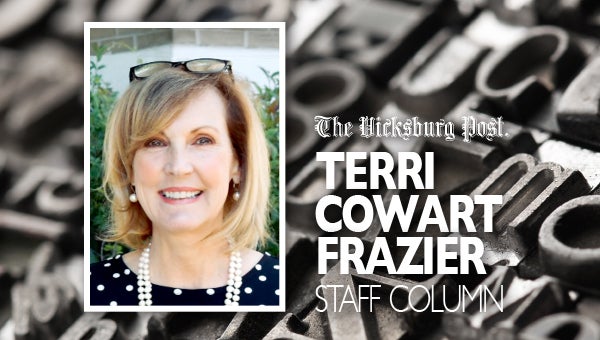It’s a wrap: Savvy shopkeepers and Chinese government played a role in those pretty packages
Published 11:23 pm Friday, December 15, 2023
There was a time when I aspired to be a gift wrapper. It just always looked like a fun job when I was younger – watching the women rip the wrapping paper from the large rolls anchored to the wall and then creating beautiful bows that made each and every package special.
I can assure you, that’s not the case now. When my family began to expand, I learned very quickly wrapping presents professionally would not have been the job for me.
However, this epiphany did not negate the fact I love pretty packages.
Therefore, when the holiday season rolls around, I start out with the best of intentions of having beautifully wrapped gifts under my tree.
And every Christmas, the first 10 or so look like masterpieces.
But as time begins to run short and drudgery sets in unfortunately those last few gifts don’t get much attention. In fact, on some occasions, there is no wrapping at all. I just go for the gift bags.
Yes, I know they are pricier than a roll of wrapping paper and tape, but what’s a few more dollars when your hands are worn out from all the cutting and clipping?
This year, I decided to try something new and in an attempt to make wrapping more tolerable, I set up a “wrapping station” in my house. I put out a folding table and gathered all my supplies in one spot. This seems to have made the job of wrapping less loathsome, and I am moving at a faster clip than in times past.
Speaking of times past, I began to wonder when the practice of gift wrapping first started so I did a little Googling.
According to bustle.com, the origins of gift-wrapping began in China. During the Song dynasty (960 to 1279) when gifts of money were given out to government officials, it was in envelopes made of hemp, bamboo fibers and rice straws. In Japan, during the Edo period (1603 to 1867) a reusable wrapping paper called “Furoshiki” was used and in Korea, the “Bojagi,” which is a traditional wrapping cloth made of silk was said to have been used during the Three Kingdoms period (57B.B to 68 A.D.)
In the west, the website stated, it was the Hall brothers of “Hallmark fame” who are credited with our modern-day gift wrap, and ironically it had been by chance.
During the holiday season in 1917, J.C. and Rollie Halls’ stationary store ran into a problem. The store had sold out of red, white, and green tissue paper, which was used at that time to wrap gifts. To fill the void, the brothers brought out their decorative French paper, which was used for lining envelopes and sold it for 10 cents a sheet. Consumers loved the French paper and it, too, sold out.
Knowing customers had been willing to pay more money for the French paper, when Christmas rolled around the following year, the bothers once again offered the French paper to be used for wrapping, but this time it was sold at three sheets for 25 cents.
This increased cost had not been an issue and once again, the French paper sold out. Therefore, with their continued success with the French paper, the Hallmark brothers began producing decorative wrapping paper in 1919.
Today, Americans spend some $2.6 billion to $3.2 billion a year on wrapping paper and gift bags.
I would have to say, that’s a lot of wrapping going on.
And speaking of wrapping, I still have a lot to do, so I’m going to have to wrap this column.







